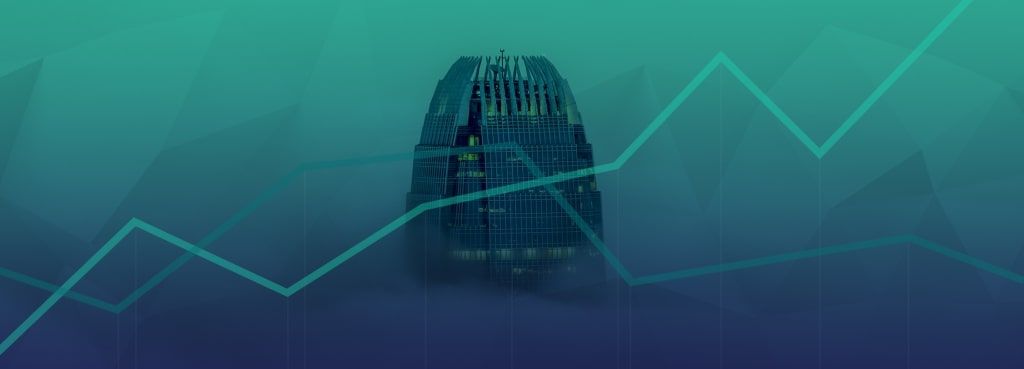Making Sustainable High-Interest Rates a Reality for Investors

High-interest rates are ideal, not only for short-term investors and those desiring streams of passive income, but for those seeking a hedge against inflation in these uncertain times, and those looking for a sustainable retirement plan. For today’s savvy investor, the question is how to find these high-interest rates through secure, globally accessible, and convenient digital channels in an environment offering so many options.
Let’s look at the history of interest rates over the last two hundred years in the US. Then, let’s look at the innovations of today and how decentralized alternatives — or DeFi — can revolutionize the time-honored tradition of earning interest for maximizing financial gains while maintaining financial stability.
A Brief History of Interest Rates
Over the last two centuries in the US, interest rates have seen some extreme volatility. From America’s first bank in 1798 with an interest rate of 8.1% to the drastically lowered war debt financing rate of 1.7% in 1945. The highest rate in history was 15.8% after rampant inflation in the 1970s. Between 2007 and 2008 interest rates were lowered from 5.2% to 2.3% by the Fed in an attempt to ameliorate the subprime banking fiasco.
Today hovering just above 0%, interest rates in the US have at least resisted going into negative territory as other countries experiment with these tactics, forcing those trying to save, to spend their funds, or watch them dwindle away. Interest rate cycles on average last 22 to 27 years. A source from the Bank of England in January 2020 predicted that these cycles would be extending, indicating the near-zero interest rates of today will go on much longer into the future. (See graph below.)

Caught in the Net Interest Rate Margin
Net Interest Margin or NIM is a key operating metric for banks. This percentage shows how much a bank earns in interest from their loans after taking out interest paid for deposits. Today, nearly all traditional banks are dependent on NIMs for revenues. Over the last five years, JPMorgan derived approximately 50% of its total revenues from net interest income.
NIM is primarily dependent on the Interest Rate Spread a bank can maintain. Though NIMs have been fairly consistent since the Great Recession of 2008, traditional banks have not passed the benefits on to their customers. The interest rate banks pay has remained about the same for over 10 years, while their profits have gone up, starting when interest rates went to less than 2% due to the financial crisis and recently near zero due to the pandemic crisis of 2020-2021. These banks realized this did not result in a loss of customers and therefore did not choose to offer customers correspondingly higher interest rates.
The average bank interest rate for interest checking accounts in the United States as of April 2021 is just 0.03%. The average savings account rate is only 0.04%, and the average money market account interest rate is a mere 0.06%.
With current rates of inflation as of May 2021 conservatively estimated at 5%, consumer prices rose higher over the course of a year with the sharpest increase since September 2008. With the Fed openly expressing a goal of maintaining a rate of inflation of over 2%. It seems clear that anyone choosing these kinds of traditional banking options will be losing money at an alarming rate.
The tide may be turning now, however, as more of these traditional banking customers are learning about new ways of earning higher interests outside of legacy banking models. A recent report from PwC suggests near-zero interest rates and the rise of alternative digital finance will create even tighter margins across product portfolios for traditional banks. The report, “Securing your tomorrow, today – The future of financial services,” predicts non-bank, online-only financial providers will become increasingly important in today’s financial system.
The report states: “In the last 10 years, aggregate lending in USD by non-banks has outstripped the pace of growth of traditional lenders, with non-banks seeing a compound annual growth rate (CAGR) of lending 2.3%, compared to 0.6% CAGR to banks.”
Breaking Away from the Old ways
Today, tech-savvy investors are discovering better ways to earn higher interests through Decentralized Finance (DeFi). On February 9th, 2021 a milestone was hit for DeFi as the industry experienced a 3,400% growth in a single year. Now there are more than ten DeFi protocols with over a billion dollars in collateral locked up.
Although DeFi Introduces some attractive interest rates, as with all investments, there are accommodating risks. These may include an inferior platform design resulting in a protocol that doesn’t function as advertised or intended. Since DeFi protocols often rely on other platforms such as price oracles which gather timely real-world data, there may be additional risks connected to this additional element. Otherwise technologically savvy Blockchain developers may lack financial literacy or user experience finesse, creating confusing and sometimes unworkable platform designs for potential investors. Lastly, regulators may change a formerly welcoming climate of a given DeFi platform if outrageous interest rates raise concerns.
The key is to find a DeFi platform that offers a robust suite of innovative high-interest rate-yielding financial products and the security traditionally associated with legacy banks. EQIFi might offer the best way to explore these innovations while keeping your funds secure.
In the words of EQIFi Chairman, Jason Blick:
“EQIFi is the first DeFi protocol in partnership with a fully licensed and regulated digital bank. This fact alone sets EQIFi apart from every other DeFi project on the market today.”
EQIFi is building a global DeFi alternative to deliver more than any other decentralized system worldwide. In an uncertain world of lower interest rates for investors worldwide, EQIFI brings professional, secure, and convenient digital channels for your day-to-day financial needs — with the higher interest rates investors expect from DeFi. Join us today!
EQIFi Team